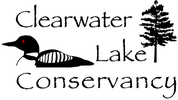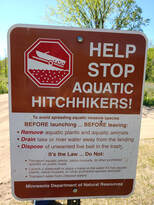Timothy Plude was the Invasive Species Specialist and Ecological & Water Resource contact for the DNR in our area. The Clearwater Lake Association Board worked closely with him for several years. We asked him to explain the permitting process for treatment of Eurasian Milfoil (EWM). Mr Plude has moved on to a new position since this was provided.
Permitting Process
An application is usually submitted for control of EWM by a lake association or district. The application should include general information about the proposed treatment area like location, size and density of plants; the application should include information about what method is to be used for control (herbicide, mechanical, other); a preliminary map should also be included in the application.
DNR reviews application to make sure the proposal follows state rules and statutes (specifically Statute 103G & Rule 6280; and other rules and statutes for additional consideration) and also looks at rare and endangered resources that may be affected by the proposal. After receipt of the application, as part of the review process, the DNR may inspect the proposed treatment areas prior to approval. The method of control is reviewed to make sure it complies with law. If a herbicide is proposed, it needs to be an US EPA and Mn Dept. of Health-approved herbicide and the label must be followed according to federal law during the application of the herbicide (follow all label rates specific to target pest, post water use restrictions, etc.).
Because most applications are submitted in advance, the initial proposed map is usually a placeholder and an updated and more accurate map created by the contractor will be submitted closer to the proposed treatment time-frame. DNR may inspect the updated mapped treatment areas prior to approval.
If the proposed treatment identified in the application looks like it intends to follow the laws, then a permit is approved and the treatment can take place. A DNR pesticide enforcement specialist may request from the applicator time to inspect and observe a pesticide application. When the pesticide treatment is finished, the pesticide applicator must report the amount of pesticide used for each permit, these records are kept by MDH and can be requested (sometimes the applicator company will send me copies).
Because most applications are submitted in advance, the initial proposed map is usually a placeholder and an updated and more accurate map created by the contractor will be submitted closer to the proposed treatment time-frame. DNR may inspect the updated mapped treatment areas prior to approval.
If the proposed treatment identified in the application looks like it intends to follow the laws, then a permit is approved and the treatment can take place. A DNR pesticide enforcement specialist may request from the applicator time to inspect and observe a pesticide application. When the pesticide treatment is finished, the pesticide applicator must report the amount of pesticide used for each permit, these records are kept by MDH and can be requested (sometimes the applicator company will send me copies).
Tim Plude
Invasive Species Specialist | Ecological & Water Resources
Minnesota Department of Natural Resources
1601 Minnesota Dr.
Brainerd, MN 56401
Invasive Species Specialist | Ecological & Water Resources
Minnesota Department of Natural Resources
1601 Minnesota Dr.
Brainerd, MN 56401
Herbicide applied to Clearwater Lake with approved permits
2013..........2000# Navigate (granular)
2014......... 720 gallons of DMA4 (Liquid)
2015..........1350# Navigate and 600 gallons DMA4
2016..........1450# Navigate and 218.5 gallons DMA4
2017..........1690# Navigate and 120 gallons DMA4
2018......... No Treatment
2019..........2400# Navigate DMA (granular) and ProcellaCORp
2020..........ProcellaCORp
2021......... ProcellaCORp and Hand Pulling
2022..........Hand Pulling
2023..........ProcellaCORp and Hand Pulling
2014......... 720 gallons of DMA4 (Liquid)
2015..........1350# Navigate and 600 gallons DMA4
2016..........1450# Navigate and 218.5 gallons DMA4
2017..........1690# Navigate and 120 gallons DMA4
2018......... No Treatment
2019..........2400# Navigate DMA (granular) and ProcellaCORp
2020..........ProcellaCORp
2021......... ProcellaCORp and Hand Pulling
2022..........Hand Pulling
2023..........ProcellaCORp and Hand Pulling


